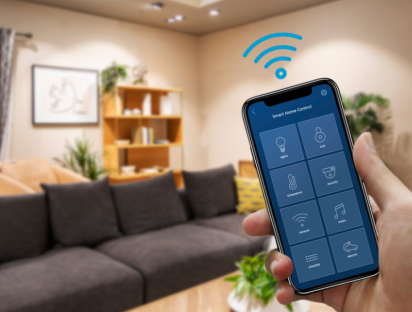
A start-up launches an innovative, environmentally friendly and sustainable product? Wonderful! But even with the best of intentions, entrepreneurs often overlook crucial aspects that are necessary to run their business in a truly responsible way. Deliveries, corporate governance, raw materials... What are the "seven sins" of sustainability?
Young, well-intentioned innovators usually want their products to offer a sustainable value proposition. However, these entrepreneurs often commit what we call the "sins" of sustainability. Despite having designed a solid product that largely meets the triple aim of environmental respect, positive social impact and fair economic profit, their ideas invariably have a flaw.
These "sins" are understandable: the fast pace at which entrepreneurs work rarely allows them enough time to consider all factors, especially when it comes to sustainability. Energy consumption, gender equality, for example, all need to be assessed. To help those who want to avoid these mistakes, we offer some guidance and a series of questions to think about. Typically, these mistakes that undermine a company's sustainability fall into seven categories.
Delivery: an often overlooked area of emissions
The first common mistake concerns the delivery process. The entrepreneur finalises a responsible product concept, but relies on a traditional delivery process. Whether it's Amazon, Colissimo, eBay or FedEx, many entrepreneurs choose unsustainable delivery methods to get their products to customers.
Consider the case of an eco-friendly clothing startup that chooses to ship its products using standard, non-recyclable packaging and high-carbon shipping methods. This choice effectively cancels out many of the sustainability benefits associated with an innovative design. To avoid this, entrepreneurs should ask themselves: What is the environmental impact of the chosen shipping method? Is it the most environmentally friendly? Does the supplier encourage the use of unique delivery methods (lockers, click & collect)? For example, prioritising delivery to lockers in shopping centres or train stations can avoid a lot of travel for the delivery person and therefore reduce carbon emissions.
tracking the origin of raw materials
Another simple but significant mistake is not knowing the source of the resources used to make a product. Many entrepreneurs simply believe the labels or promises of their suppliers. For example, a company may believe it is using organic cotton, but on closer inspection it turns out to be grown using practices that harm local ecosystems.
To avoid this, we encourage entrepreneurs to find out more about the source, production and certification of the raw materials and resources they use. They should take the time to approach suppliers and ask questions about their production sites, the organisations behind their labels, production processes, waste management policies...
Establishing the full product life cycle
When it comes to sustainability, entrepreneurs often focus only on the product itself. In doing so, they may overlook the product's life cycle, which can be critical to its sustainability. The life cycle refers to the sequence of stages a product goes through during its existence, from production to use to disposal. For example, a solar-powered device startup may design a highly energy-efficient product, but overlook the environmental impact of disposing of the product.
That's why we encourage entrepreneurs to create a cradle-to-cradle map. This concept refers to mapping out all the stages of a product's creation, use and disposal, focusing on how what is 'taken' from nature will be given back to it. Startups should also ask themselves whether they have thought about the repairability of their products.
The company isn't the only player in sustainability
Some entrepreneurs design flawless product lifecycles that account for every step of their sustainable products. The only problem they face is that they have not trained or informed customers about what they need to do to complete the product's life cycle. For example, a carpet company may implement a complete process for collecting old carpets at the end of their life cycle, but fail to educate the customer on how to contact the company years later for collection.
To avoid this trap, entrepreneurs should ask themselves: Does my customer understand their responsibilities in the product lifecycle? Do I have a way of reminding them? How can I effectively communicate with them?
Sustainability for products, but also within the company itself
Another crucial point that entrepreneurs often neglect is to look at their own organisation with a critical eye. Sometimes this is because the team feels sufficiently committed to the process of creating a socially responsible business that they assume they are above reproach internally. But what about the well-being of employees?
The employer also needs to meet the triple bottom line internally. For example, a company may promote sustainability externally while neglecting fair wages or safe working conditions for its employees. Businesses should ask themselves: Are the wages fair? Is the working environment appropriate to the tasks and needs of the employees? What is the impact of transporting employees? Are we training our employees on sustainability issues?
Clear governance system
Corporate governance involves balancing the interests of different stakeholders. These stakeholders include governments, investors, customers and employees. Good governance requires a system of clearly defined rules, standards and practices.
Without clear governance, a startup may face issues of transparency and accountability, leading to ethical and operational difficulties. Startups should spend time thinking about this governance by asking questions such as: How will we make decisions? What factors should we consider? What are the priorities when making tough decisions?
Innovate, but not just at the start of the project
Finally, we encourage entrepreneurs to think about continuous innovation as a fundamental element in ensuring the long-term sustainability and viability of the business. For example, a business may thrive initially with a sustainable product that ticks all the boxes above, but fail to innovate over time and risk becoming obsolete in a dynamic market.
To avoid this, entrepreneurs should ask themselves: What will the company do to remain competitive over time? What financial, social and human resources are available to support innovation? How do we promote, encourage and reward a culture of innovation?
By addressing these seven sustainability sins, startups can ensure that their model has a truly positive impact on the environment, society and the economy. We believe that through their commitment, businesses have a real opportunity to change our social model and our relationship with the world around us.




